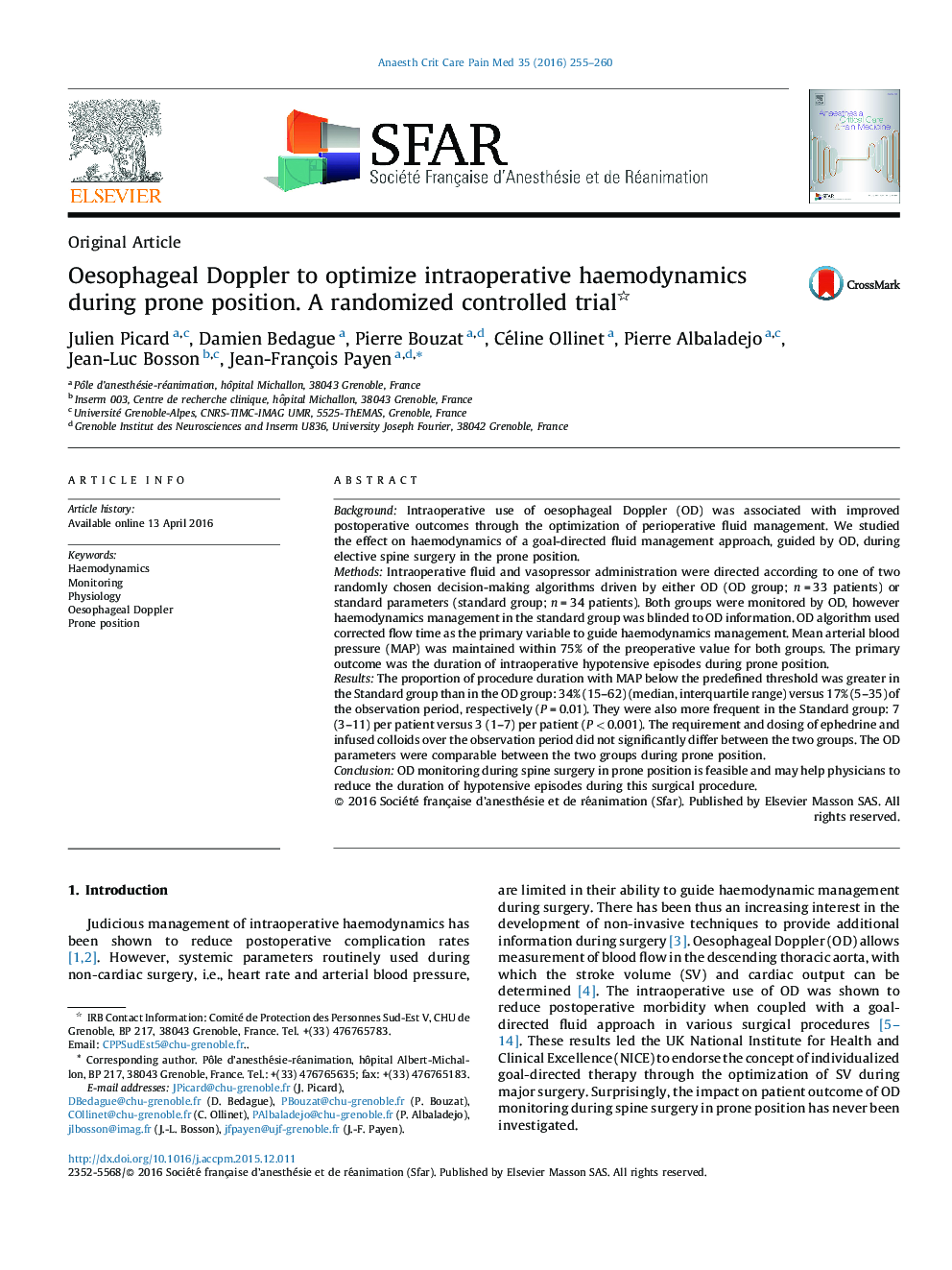| Article ID | Journal | Published Year | Pages | File Type |
|---|---|---|---|---|
| 2741863 | Anaesthesia Critical Care & Pain Medicine | 2016 | 6 Pages |
BackgroundIntraoperative use of oesophageal Doppler (OD) was associated with improved postoperative outcomes through the optimization of perioperative fluid management. We studied the effect on haemodynamics of a goal-directed fluid management approach, guided by OD, during elective spine surgery in the prone position.MethodsIntraoperative fluid and vasopressor administration were directed according to one of two randomly chosen decision-making algorithms driven by either OD (OD group; n = 33 patients) or standard parameters (standard group; n = 34 patients). Both groups were monitored by OD, however haemodynamics management in the standard group was blinded to OD information. OD algorithm used corrected flow time as the primary variable to guide haemodynamics management. Mean arterial blood pressure (MAP) was maintained within 75% of the preoperative value for both groups. The primary outcome was the duration of intraoperative hypotensive episodes during prone position.ResultsThe proportion of procedure duration with MAP below the predefined threshold was greater in the Standard group than in the OD group: 34% (15–62) (median, interquartile range) versus 17% (5–35) of the observation period, respectively (P = 0.01). They were also more frequent in the Standard group: 7 (3–11) per patient versus 3 (1–7) per patient (P < 0.001). The requirement and dosing of ephedrine and infused colloids over the observation period did not significantly differ between the two groups. The OD parameters were comparable between the two groups during prone position.ConclusionOD monitoring during spine surgery in prone position is feasible and may help physicians to reduce the duration of hypotensive episodes during this surgical procedure.
